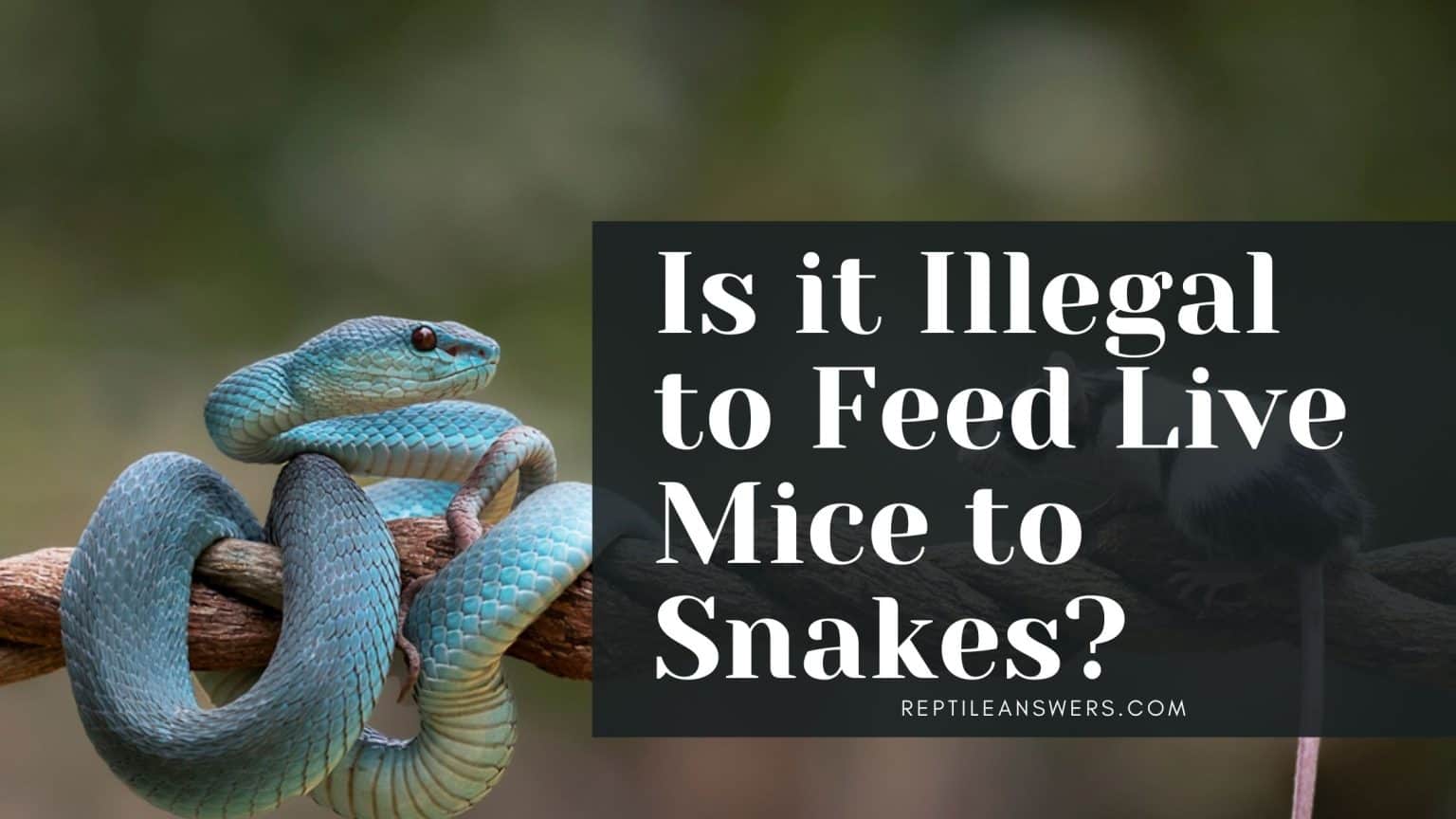As an intriguing query arises in the realm of reptile care—”Is feeding mice to snakes legal or morally acceptable?”—it evokes a myriad of perspectives steeped in both legality and ethics. The debate often pits animal welfare advocates against those entrenched in traditional husbandry practices. By delving into the nuances of this contentious issue, we can delineate not only the legal framework surrounding the feeding of live rodents to snakes but also probe the ethical ramifications that ripple through this practice.
To begin, it is imperative to understand the legal landscape governing the treatment of animals. In many jurisdictions, feeding live prey to snakes is not expressly prohibited. The laws often reflect a complex interplay of species-specific regulations and general animal welfare statutes. For instance, while in some areas, there are stringent laws protecting certain animals from suffering, reptiles are frequently categorized differently. As a result, many jurisdictions do not regulate how snakes are fed as stringently as they might with domestic animals such as cats and dogs.
This legal permissiveness does not, however, provide carte blanche for the practice. The legal framework often serves as a reflection of societal values and evolving attitudes towards animal rights. In recent years, an increasing number of animal welfare organizations have vocally condemned the act of feeding live mice to snakes. Their position hinges on the assertion that feeding live prey can subject the animals to undue stress and suffering—an assertion that calls into question the very essence of ethical animal husbandry.
Delving deeper, we encounter the pivotal question of morality. Can the act of feeding live prey be reconciled with contemporary ethical standards regarding animal treatment? Advocates of feeding live rodents posits that it mimics natural predation, asserting that it fulfills the dietary and behavioral needs of the snakes. This viewpoint tends to resonate with herpetologists and traditional reptile keepers who argue that live feeding is a means of ensuring that snakes receive adequate stimulation, health, and nutrition.
However, such arguments are increasingly scrutinized through a more compassionate lens. The moral implications of subjecting one sentient being to suffer for the sustenance of another cannot be overlooked. The notion of a live mouse being pursued and potentially harmed by a snake may elicit sympathy from those who advocate for a more humane approach to animal husbandry. Several alternatives—such as pre-killed, frozen-thawed rodents—are widely available and present a compelling alternative. These methods do not expose prey animals to the hazards of being consumed while alive and allow reptile owners to meet the dietary requirements of their pets ethically.
In examining the social context, we also find that cultural perceptions play a significant role in shaping opinions on this issue. Several societies uphold an intrinsic respect for life, viewing all beings, whether mice or snakes, as deserving of compassion. In these contexts, the practice of feeding live prey can come across as barbaric and inhumane, inciting outrage among animal rights activists. Conversely, cultures that have espoused the survival of the fittest philosophy may hold a different perspective, accepting the predatory instinct as a natural order of existence.
The question shifts further when considering the implications of education and awareness. As society becomes more informed about animal sentience—including the ability of rodents to feel pain and stress—there is an increasing demand for transparency and ethical practices in pet care. Consumer sentiment has considerable sway over industry trends, and as more pet owners opt for humane alternatives in feeding practices, the call for change grows louder. In light of this, it becomes essential for those who keep snakes to acknowledge and adapt to this shifting paradigm.
Moreover, educators and professionals in the field have a pivotal role in shaping responsible practices. Reptile expos, educational seminars, and public awareness campaigns can greatly influence understanding and foster responsible ownership. By promoting humane feeding methods and educating the public on the ethical considerations surrounding animal care, a more compassionate norm can emerge. This shift in perspective could facilitate a broader conversation regarding the responsibilities of pet ownership, underscoring the significance of empathy in animal husbandry.
Moreover, the discussion must encompass the psychological aspects of both the snake and the prey. While snakes may be instinctively driven to hunt and consume live prey, the ethical dilemma arises when assessing the mental states of their intended victims. Mice, known for their intelligence and complex behaviors, experience fear and distress when faced with predation. This dissonance—feeding animals capable of experiencing suffering to other animals—highlights a troubling aspect of the feeding practice.
In reflecting on the broader implications of feeding practices, we must recognize the changing tide in societal values. We are witnessing a transformative period in which the conversation surrounding animal rights is gaining fervor. As empathy becomes a foundational value in addressing issues of animal welfare, we may find ourselves at a crossroads. The choice between legal permissiveness and moral integrity will continue to define the discourse surrounding reptile care.
In conclusion, the question of whether feeding mice to snakes is legal or morally acceptable is far from straightforward. While it may occupy a legal gray area, moral considerations increasingly take center stage in the ongoing dialogue about animal welfare. Advocating for a shift towards more humane practices is not merely a preference but a reflection of an evolving consciousness regarding our responsibilities towards all living beings. The challenge now lies in fostering a culture that prioritizes compassion while still honoring the natural instincts of our reptilian companions.







